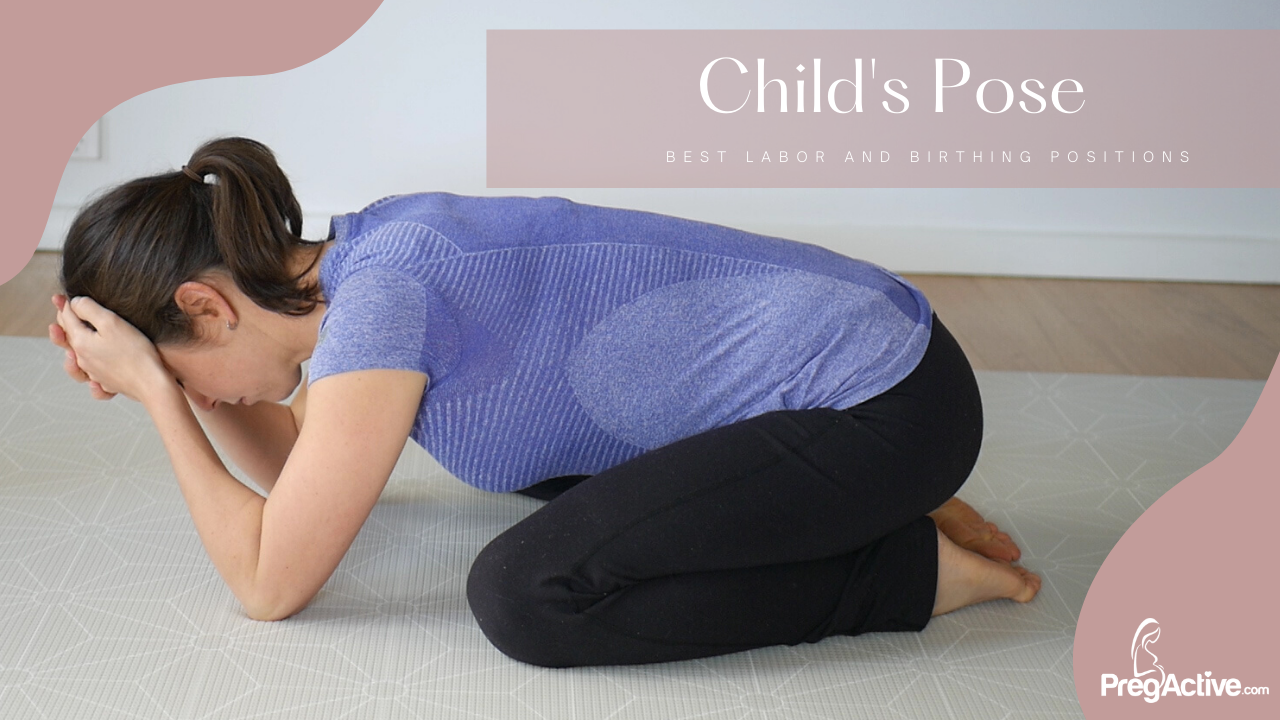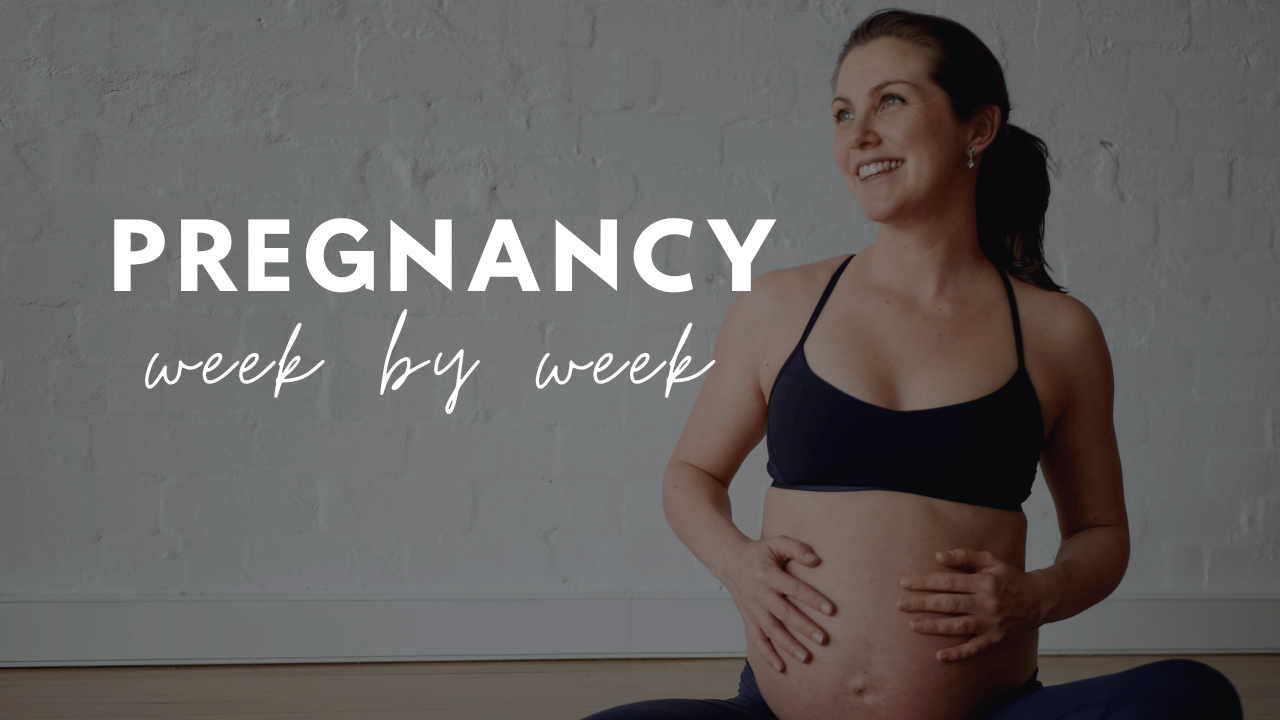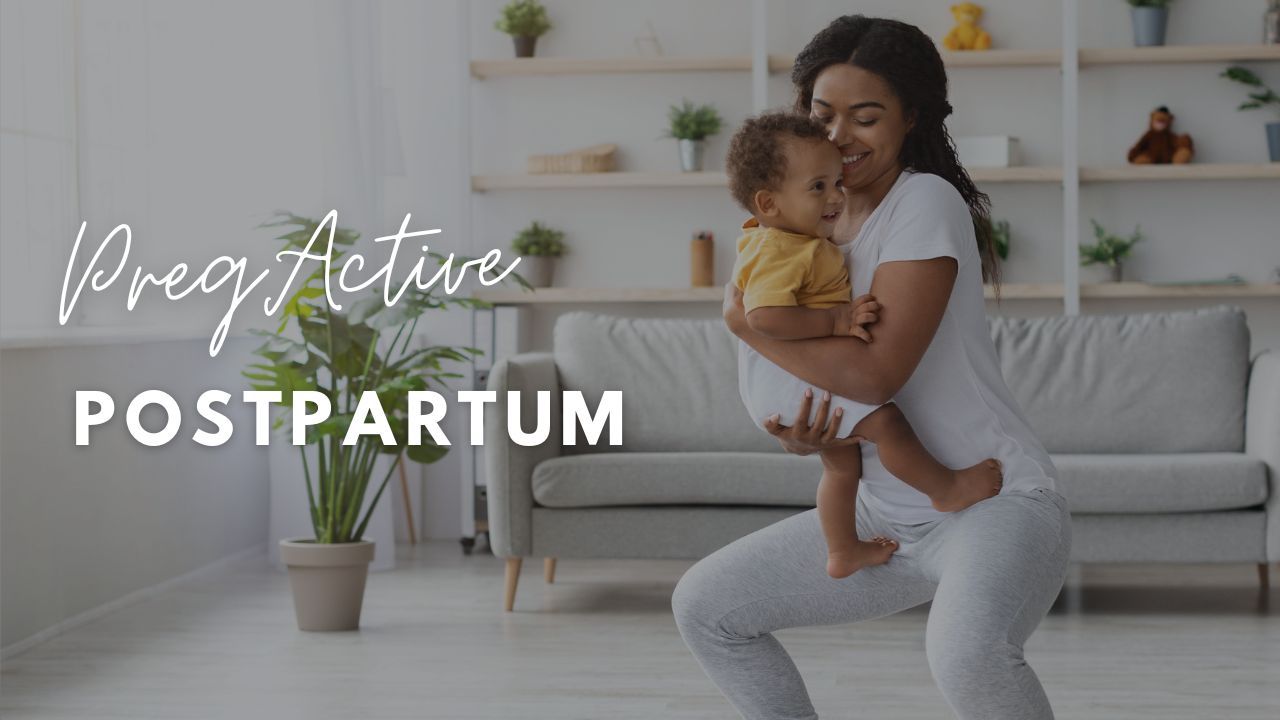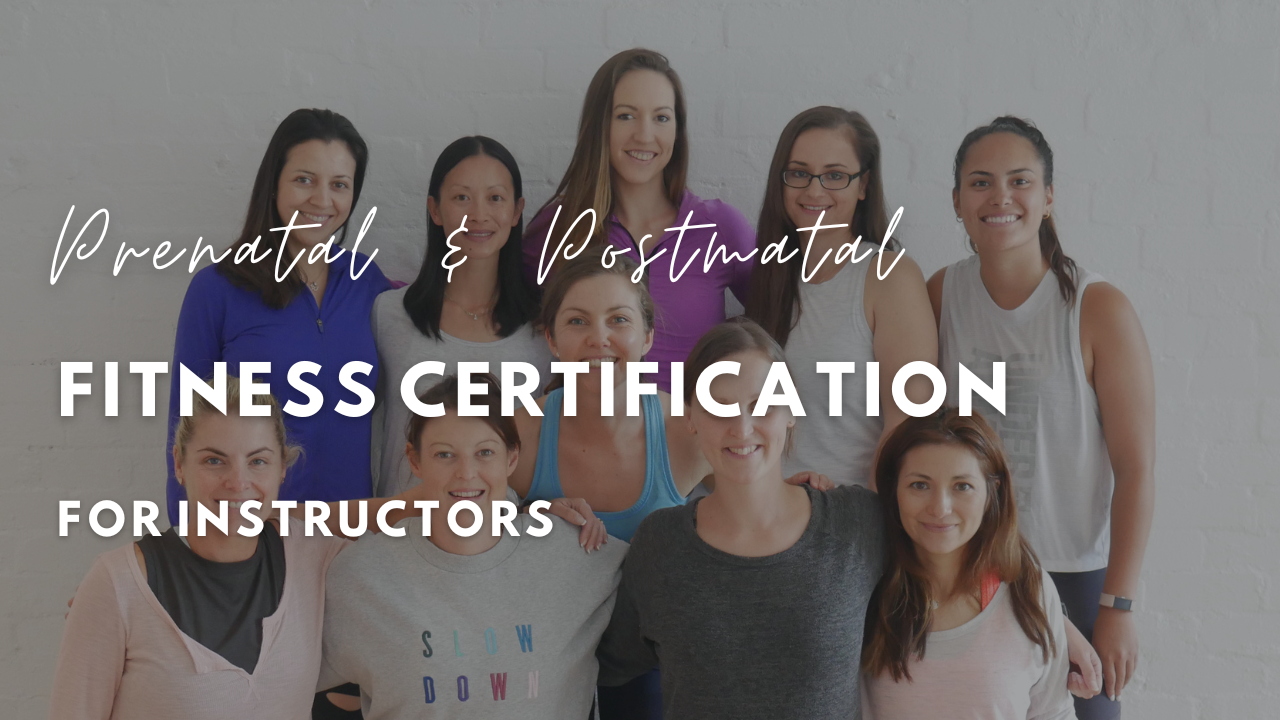Best Position to Give Birth to AVOID Tearing
Best Position to Give Birth
Are you preparing for childbirth and looking for the best positions to minimize the risk of tearing? In this informative video, we explore the most effective birthing positions that can help you avoid tearing during delivery.
Learn about the benefits of squatting, kneeling, and side-lying positions, and discover expert tips from healthcare professionals to ensure a smoother birthing experience.
Whether you're a first-time mom or adding to your family, understanding your options can empower you during labor.
Don't miss out on these essential strategies for a positive childbirth experience!
What is the Best Birth Position?
Is it sitting, standing, using a chair or a cushion? Do you know the best birthing positions for a comfortable delivery? Do you have a plan as to how you will spend your labor and delivery?
Maybe you will lie on your side. Or walk around. Maybe you will do a lot of squatting to push out your baby. Or maybe it'll be a combination of all the above.
There Is No Need To Take Labor Lying Down Anymore
These days, expectant mamas are encouraged to have their own plan so that they feel empowered and comfortable.
You can change birthing positions as often as you like, and deliver your baby in birth positions far different from the old traditional methods.
Previously, you would have been told to lie on your back. But no you will be encouraged to utilize the birthing positions that you feel most comfortable with.
Keep Moving!
Movement and positioning in labor is what will help you. You see, when you are moving it enhances comfort by stimulating the receptors in the brain that decrease pain perception. When your contractions become very strong, endorphins are released and pain perception decreases even more.
By moving, in response to your contractions, you can decrease pain and better facilitate labor.
Movement also helps the baby move through the pelvis, and some positions enlarge pelvic diameters.
During labor, you need support from a friend or doula.
Before you go into labor, let them know the birthing positions you want so that they can help remind you when the time comes.
Arrange to have continuous support in labor from a professional labor assistant (a doula) or a close friend or family member who makes you feel safe and confident. Ask them to remind you to try different positions or activities in labor.
A good idea is to make a list of the positions that you like best and bring it with you.
My Birth Preparation program is about you practicing the best positions and movements before your labor begins, so you and your partner feel comfortable and confident using them.
7 Best Positions to Give Birth
1. Squatting to Give Birth
You will likely use this squatting position only late in labor or during delivery itself. Like standing, squatting opens up the pelvis to give your baby more room to move on down.
Pros
- Encourages rapid descent.
- Uses gravity.
- May increase rotation of baby.
- Excellent for fetal circulation.
- May increase pelvis diameter by as much as 2 centimeters.
- Requires less bearing-down effort.
- Your thighs keep baby well aligned.
- Allows freedom to shift your weight for comfort.
- Allows excellent perineal access.
Cons
- Can be tiring.
- Sometimes hard for health care provider to hear fetal heart tones.
- May be hard for you to assist in birth if you wish to do so.
- Possible increased blood loss.
2. Standing to Give Birth
Standing helps you work with gravity, allowing your pelvis to open and your baby to move down into your birth canal. Leaning against a wall or your partner for support during contractions is best.
Standing Supported Squat Pros
- Allows you to be supported by your standing or sitting partner.
- Takes advantage of gravity.
- Realigns your pelvis to increase the opening.
- Movement causes changes in your pelvic joints, helping your baby through the birth canal.
- Makes contractions feel less painful and more productive.
- Helps your baby line up with the angle of your pelvis.
- Can increase your urge to push in the second stage of labor.
Cons
- Your partner needs to be strong.
- Can be tiring for both of you.
- Possible increased blood loss.
Walking during Labor
Pros
- Baby is well aligned in your pelvis.
- May speed labor.
- Reduces backache.
- Encourages descent.
- Uses gravity.
- Contractions are often less painful.
Cons
- Not recommended if you have high blood pressure
- Can only be used with continuous electronic fetal monitoring if telemetry unit is available

3. Rocking during Labor
Rocking, either on a chair or swaying back and forth, allows your pelvis to move and encourages the baby to descend.
4. Sitting as a Birthing Position
Did you know that sitting can ease the pain of contractions? And allow gravity to assist in bringing your baby down into the birth canal. Sitting also helps to open up your pelvis.
Pros
- Good for resting.
- Uses gravity.
- Can be used with continuous electronic fetal monitoring.
Cons
May not be possible if you have high blood pressure.
5. Leaning over or kneeling.
Leaning forward or over a stack of pillows on a bed can be helpful when you have back labor because it encourages the baby to move forward, taking the pressure off your back.
Pros
- Can help shift the baby if needed.
- Uses gravity.
- Birth ball can be used.
- Contractions are often less painful and more productive.
- Baby is well aligned in your pelvis.
- Relieves backache.
- Easier for your labor partner to help relieve your back pain.
- May be more restful than standing.
- Good for pelvic rocking.
- Less strain on your wrists and arms.
Cons
- Hard for health care provider to help with birth.
6. Hands and knees.
This position allows you to do pelvic tilts for comfort, while giving your partner great access to your back for massage and counter pressure.
7. Side-lying as a birthing position
Lying on your side is better than lying on your back because it doesn't compress the major veins in your body.
Pros
- Makes contractions more effective.
- Easier for you to relax between contractions.
- Can slow a birth that's moving too fast.
- Helps get oxygen to the baby.
- Good resting position.
- Helpful if you have elevated blood pressure.
- Works with epidural.
- Your labor partner can support your legs.
- Lowers chances of tearing.
- Good access to perineum.
Cons
- May be hard for health care provider to access fetal heart tones.
- No help from gravity.
- If no one can hold your legs, you must support them on your own.
- You may feel too passive in this position.

Labor Positions for a Comfortable Delivery
So what labor positions are most comfortable?
To answer this question, I want you to know that the most comfortable labor position is the position that you feel most comfortable in!
In saying that, here are some positions that may be extra helpful to you:
1. If you have an epidural:
When you have an epidural, you won't be able to walk around. There are still some labor positions will help such as; sitting or lying on your side, even when you're numb from the waist down.
2. If you have back labor
You can often relieve your pain that comes from back labor by leaning over, kneeling, or getting onto your hands and knees .
3. If you're being continuously monitored
You can rock, squat, lie or sit on your side during labor. Yes, even if you are being monitored for contractions and fetal heart rate.
4. When you're delivering your baby
Side-lying may be the easiest delivery position for your practitioner. But for you, it may be more comfortable for you to deliver while squatting or on hands and knees.
Are there any risks to any labor positions?
Lying on your back is not ideal but is OK if it suits you. You see lying on your back with a full-term baby inside your uterus can put pressure on important blood vessels, possibly compromising blood flow to the baby.
Do any labor positions make childbirth easier?
I find that upright positions such as standing, walking, squatting and sitting are ideal. Remember, this is about you finding the best birthing positions for you.
Now, I want to chat about the best labor and delivery positions using a chair or a cushion.
Movement in these positions with the support of a chair can help to relax your mind and body in preparation and during labor. I used them to have a natural, drug-free labor and quick birth of my baby boy and I want to share them with you too.
These birth preparation poses can be done using a stable chair or the side of the bed or couch.
Relax and Feel Safe
It's also important to practice these before going into labor so you are familiar with them and can choose which ones you would like in labor.
I used many of these throughout my labor and especially in early labor when at home.
I used the dining room table and the kitchen bench to lean on rather than a chair, and it worked for me. I set myself up a yoga mat on the floor next to the couch so I could kneel down and feel supported with my knees.
My Online Program
As part of my birth program I detail for you how you can go into birth feeling strong, empowered and informed.
I have been teaching women theses techniques for years, and used them in my own incredible drug-free natural labor.
In this post I will detail for you how you can use a chair (or couch) and then using just the support of cushions or, just YOU!
Labor and Delivery Positions Using a Chair
These next 7 positions involve using a chair.
1. Supported Kneeling

Focusing on deep slow breaths here. Having something under your knees to support can be helpful.
Relax and focus on your breathing, whilst trying to let your weight drop into the support of the chair.
2. Chair Hip Circles

Conserving energy is so important, particularly in that early stage of labor. These movements help with the hips and the back and your progression through labor.
Movement is key in labor, but slow controlled movement where you don't expend too much of your energy is what you want.
3. Chair Child's Pose

Resting down in a supported child's pose.
You may find you just drop into this on the side of the bed, but personally I find a harder surface like the chair or even a couch helps to settle the nervous system when you gently press your forehead onto the edge.
4. Supported Forward Fold

Just simply having your hands on the chair and leaning back can help take the weight off your back. This can also be done on the edge of the chair.
5. Peddling in Forward Fold

This is great for the hips and assisting the progression of your labor. Again, movement is key in those early stages particularly.
Get yourself into a rhythm with this and it will help. Some music might help you with this, be sure to check out my Birth Prep Music Playlist
6. Supported Squat

Pressing your forehead against the hard surface of the chair can help settle the nervous system. I used this in the shower in the hospital, holding onto the bars in the shower and dropping down into the squat and coming up again.
I felt a needs to be lower and this support helped me do this. The water on my back from the shower was blissful too.
7. Supported forward fold on a chair

Trying not to slouch on the couch can be hard, especially later in your pregnancy. But trust me, it's not good for you to slouch.
Not good for you, your back or the position of your baby.
Slouching encourages posterior positioning of your baby, and you do not want your baby to be in posterior position.
Ask any mother who has endured 'back labor' with baby' spine against your spine. It can be painful and best avoided.
Be Strong and Confident
Every woman deserves to go into birth feeling strong, empowered and informed. This is key to owning your birth experience. It's what I did and what I teach my PregActive Mama's to do. And I'm here to help you too.
Because I believe you are totally going to own your birthing experience and transition into motherhood with a positive memory of the day your baby arrived into the world.
10 Best Birthing Positions Video
Labor and Birthing Positions Using Cushions
You're about to discover the 5 best labor and birthing positions for you and baby using only cushions. Learn these and be empowered for labor!
If you don't have any equipment, then I recommend you use cushions. Gather up a pile and try out these positions for labor.
I set myself up on the bed at home with my TENS machine on. It was one of the first positions I used in early labor. I was trying to conserve energy as I didn't know how long I had to go.
Yoga Classes
Turns out, from the moment my waters broke in the yoga class I was in (read my birth story part one to hear all about it) until my baby boy came into this world was pretty much right on 12 hours.
For a first-time birth, it was quick. Actually, perfect amount of time if you ask me.
I've heard of very quick labors, and I'm happy with the duration of mine.
1. Incline side lying supported by cushions

Working with gravity in this rested side lying position is a great position both for the rest between contractions, but also during contractions, especially later in your labor.
2. Supported Child's Pose

Allow your body to relax, open and dilate in this blissful supported child's pose.
Perfect on the bed with cushions to lie on.
You don't actually need any equipment to have a natural labor, here are a few labor and birthing positions that are safe for you and baby that require no equipment.
3. Child's Pose

Being close to the ground can help you to feel grounded. You can also do this on the bed.
Having your knees wide apart can help open the hips, just be careful not to go too low to the ground.
4. Kneeling Hip Circles on Elbows

This is so grounding and a good way to relieve discomfort from your back in labour. You are working against gravity with this pose. And useful if you are needing to slow down the labor.
But ideally you want your elbows to be higher (like on a chair, couch or side of the bed) if you are wanting to work with gravity and encourage the baby down.
5. Kneeling Hip Circles on Hands

This is so nice, just to drop down into all fours and do these slow, rhythmic circles. Be mindful of your wrists in this pose, I personally prefer having my elbows on the side of the chair, couch or bed in a more upright position.
You are soon to meet your gorgeous baby, and that is certainly something to be excited about.
I work with so many women that come to me fearing birth.
And after working with me and my birth program they feel stronger, more empowered and completely informed going into the birthing experience.
You are going to be the most incredible Mama-bear, remember that.
What is labor?
Labor is the process of childbirth, starting with contractions of the uterus and ending with the delivery of the baby.
10 Signs of Labor
- Stronger, more frequent contractions
- Water breaks
- Baby drops
- Cervix dilates
- Cramps and increased back pain
- Weight gain stops
- Fatigue
- Vaginal discharge changes
- Loose-feeling joints
- Diarrhea
Am I going into labor? Should I call the doctor?
Throughout your prenatal appointments, you doctor should have advised you what to do if you think you're going into labor. You should also know your due date.
Labor contractions won't all be exactly spaced out. If you find that they are becoming pretty consistent, more painful and longer (30 to 70 seconds each), then you should be calling your doctor.
What if you are not sure?
I would advise you that for peace of mind you call your health care professional and explain what's going on. Now is not the time to be feeling embarrassed or worry about calling outside of office hours.
Always call your doctor or midwife if:
You experience any bleeding or bright red discharge (not brown or pinkish).
Your water breaks - especially if the fluid looks green or brown.
You experience blurred or double vision, a severe headache or sudden swelling.





